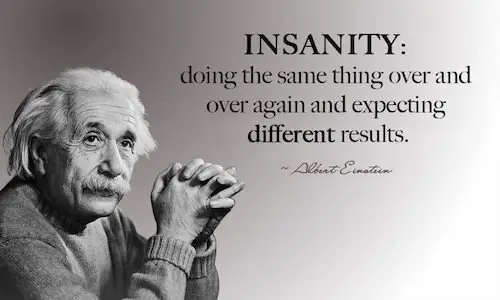The Power of Options in Change Management

Change often sparks mixed reactions, from excitement to resistance, which is why presenting clear options can transform uncertainty into collaboration. An options pack provides structure by laying out well-defined choices, highlighting risks, financial impacts, and employee considerations. This approach fosters transparency, engages stakeholders, and builds shared ownership of decisions. Whether navigating a BYOD policy or managing unionised workplaces, spelling out options helps align diverse perspectives, mitigate risks, and strengthen communication. By turning potential conflict into informed dialogue, organisations create an environment of trust and collaboration that makes change more effective and sustainable.
The Importance of Role Architecture in Organisational Redesign

In today’s complex work environment, role architecture provides the clarity and structure organisations need to succeed during transformation. By standardising job titles, aligning roles with market benchmarks, and grouping them into job families, it creates transparency, supports career growth, and reduces ambiguity. This framework is especially valuable in organisational redesigns, where roles must adapt to new ways of working, technological change, and shifting workforce expectations. When combined with change management practices such as stakeholder engagement, targeted training, and sustained support, role architecture not only strengthens organisational design but also builds confidence among employees. The result is a more engaged, agile, and productive workforce equipped to thrive in a constantly evolving landscape.
The Art of Failing Forward

Change is the only constant, and progress comes from keeping an open mind, learning from trial and error, and turning lessons into momentum. Clinging to old practices holds teams back; embracing a “fail forward” mindset builds innovation and resilience. Think of cultures that create space for experimentation: not every idea becomes a breakthrough, but the practice fuels growth. The goal is to treat failure as data, not defeat. Make mistakes visible, run honest retrospectives with the people who lived the work, extract causes and insights, adapt the plan, and try again. Build psychological safety so people can take smart risks, share what they learn, and celebrate small wins while staying persistent. Einstein’s warning about doing the same thing and expecting different results is a practical guide here. Organisations that master this approach pivot faster, trust grows, and creativity flourishes. Do not avoid failure; fail fast, fail smart, and use each setback as a launchpad for the next leap.
How to Choose the Right Change Management Methodology

Organisational change is rarely simple, which is why a wide range of methodologies exist to provide structure and guidance. Each has strengths and limitations. ADKAR focuses on individuals, Kotter’s 8-Step model offers a clear roadmap, Lewin’s three-step model is simple but static, and McKinsey’s 7-S provides a holistic but complex view. Others, such as Bridges’ Transition Model or the Kübler-Ross Change Curve, highlight the human side of change, while iterative approaches like PDSA encourage continuous improvement.
The challenge for leaders is deciding which approach to use. In reality, no single methodology fits every situation. At Enable Change Partners, we design tailored strategies by blending the most relevant elements from different models. This ensures that both organisational needs and individual experiences are addressed, improving adoption rates and building internal capability.
For example, in a digital transformation with a multinational client, we combined Kotter’s urgency, ADKAR’s focus on individuals, and Prosci’s structured approach. This mix created a strategy that achieved 95% adoption of new systems within six months, far above expectations.
Customising methodologies in this way helps organisations move beyond theory to practical outcomes, delivering transformation that is both effective and sustainable.
Why Change Managers Are a Program Manager’s Secret Weapon

Program and change managers form a powerful partnership that ensures both the technical and human sides of transformation are addressed. While program managers focus on delivering projects on time, within budget, and against technical requirements, change managers concentrate on preparing people for the journey by driving adoption, building engagement, and ensuring benefits are realised. Change managers bring essential tools such as stakeholder analysis, impact assessments, tailored communication, training programs, and executive coaching, freeing program managers to manage resources, budgets, milestones, and reporting. Together, they balance distinct responsibilities with shared goals, reducing risks and increasing the likelihood of success—projects with strong change management are six times more likely to meet objectives. Real-world examples, from major tech rollouts to large-scale restructures, show how this collaboration transforms challenges into opportunities and ensures sustainable outcomes. When program managers and change managers work hand in hand, they not only deliver systems and structures but also enable lasting organisational change, making the partnership not optional but essential for success.
Demystifying the Role of Change Manager: More Than Just “Managing Change”

Change managers play a vital role in turning business strategies into real outcomes by supporting the people who make change possible. We act as bridge builders between vision and execution, translating strategy into practical steps employees can embrace. As advocates, we ensure staff voices are heard and needs are considered, while also negotiating between competing priorities to keep transitions smooth. We provide a reliable support system through the challenges of change, mitigate risks by anticipating obstacles, and help shape culture to sustain new ways of working. By boosting efficiency and adoption, we make transformations more effective and ensure benefits are realised faster. In short, change managers are strategists, communicators, and problem-solvers who guide organisations through the complexities of evolution—facilitating not just change, but lasting transformation.
Leading Australian Building Material Giant’s Tech Overhaul

A leading Australian building materials company successfully transitioned over 7,000 employees across 300 sites from Microsoft to Google in just 18 months by investing in a tailored change management process. Despite challenges such as diverse tech skills, a scattered workforce, varied departmental needs, and an initial underestimation of the change’s impact, the organisation overcame these hurdles with a people-first approach. Leaders engaged directly with staff to understand concerns, co-created an inclusive and empathetic change plan, secured executive buy-in, and built a network of “change champions” to deliver peer-led training and on-the-ground support, particularly for remote sites. The rollout was customised to each team, with practical adjustments—like moving the Gmail icon to replace Outlook shortcuts—helping employees adapt more smoothly. The results were significant: 85% adoption within six months, stronger cross-department collaboration, higher staff satisfaction, reduced IT costs, minimal downtime, and increased remote work productivity. This case demonstrates that knowing your workforce, growing internal champions, tailoring solutions, and providing hands-on support are critical to making large-scale digital transformations successful, even with limited resources.
Psychologically safe environments

At Enable Change Partners, we see every day how lessons from different parts of life strengthen the way we lead and work. Our Managing Director, Linda Benny, has been involved in the Australian Sports Commission Women in Sport mentoring program, an experience that has broadened her perspectives and enriched the tools she shares with our team. It has also given her the opportunity to contribute to the transformation of coaching in Australia.
A key theme that stands out is the importance of psychologically safe environments. When people feel able to speak openly, share ideas, and take risks without fear, teams become more creative, collaborative, and effective. This concept has been central to our own work, and we have found real value in practical resources that bring it to life.
One example is the “Building a Psychologically Safe Environment” video developed by the Australian Sports Commission. We have incorporated it into our workshops and seen how it sparks open discussion and practical action. The feedback has been overwhelmingly positive, with teams finding new ways to foster inclusion and strengthen trust.
Psychological safety is not a nice-to-have. It is the foundation for innovation, connection, and performance. By prioritising it, leaders create environments where people feel they belong and can thrive.
Embracing Ai in the Workplace

AI is not new, yet it often brings fear into the workplace. Popular culture has painted it as a threat to jobs and even humanity, but in reality, AI is simply another tool. Like past waves of technology, it can change roles, create new opportunities, and deliver significant benefits when introduced thoughtfully.
The key is not to adopt AI because it is fashionable, but to focus on where it can add the most value. Starting small, with targeted use cases, helps employees build confidence and reduces resistance. From there, organisations can scale gradually, using AI to improve efficiency, productivity, and customer experience.
Introducing AI is not just about technology. It is about people. Success depends on leadership alignment, genuine employee engagement, and fostering a culture that encourages curiosity and adaptability. Training, open communication, and psychologically safe environments allow teams to experiment, ask questions, and see AI as something that supports their work rather than replaces it.
Challenges such as data privacy and resistance to change are real, but they can be managed with strong planning and ongoing review. By combining the right technology with a clear strategy and engaged employees, organisations can integrate AI in ways that are sustainable, effective, and embraced by their people.
Change Management vs. Change Enablement

Change enablement has evolved from traditional change management to better support people through their individual change journeys. While change management provides structure, planning, and methods to guide transitions, change enablement equips people with the tools, confidence, and mindset to adapt and thrive.
The difference matters. Change management is process-driven, often applied at the execution stage to reduce disruption and resistance. Change enablement is people-centred, happening before, during, and after change. It focuses on coaching, co-design, and human-centred practices that build resilience, collaboration, and agility.
Together, they complement each other. Change management ensures order and direction, while change enablement ensures engagement and ownership. Organisations that embrace both minimise disruption, sustain adoption, and future-proof their teams for ongoing transformation.
